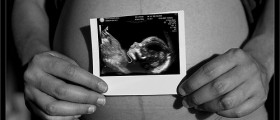Reproductive system diseases refer to a broad spectrum of diseases that affect the reproductive organs in the women, as well as in men. They include sexually transmitted diseases, as well as inherited diseases, but also the malfunction of the glands that are responsible for the production of sex hormones. Reproductive system disease should be treated immediately since many of them may cause serious complications related to the infertility and many of them are sexually transmitted.
Reproductive System Diseases in Women
There are many disease of the reproductive system in women and the most common are amenorrhea, cervical erosion, cervicitis and oligomenorrhea, as well as puerperal fever. When a woman does not have menstruation, it is regarded as amenorrhea and there are two kinds of this condition - primary and secondary. Primary amenorrhea is the condition when menstruation does not happen for a long period of time in girls who did not have menstrual cycle before and secondary amenorrhea occurs usually in women before their perimenopausal age. It is a condition marked by the sudden termination of the menstruation after years of regular menstrual period.
When the ulcers occur in the cervix region, then that condition is called cervical erosion. The most common signs of this disorder are red or pink spots that outbreak around the opening of the cervix. In the early stages of this disease, the mucus patches appear. Cervicitis is the medical term for the uterine cervix inflammation. Since there are many mucus glands that have the role to lubricate the vagina, this area is favorable environment for many bacteria and virus. Cervicitis occurs when the vaginal infections spread to the uterine cervix. When a woman has long period between two menstruations, it is regarded as oligomenorrhea and the main reason for the occurrence of this disorder is insufficient production of estrogen. This disease is serious because it can cause infertility in women. Puerperal fever is a disease that occurs almost immediately after a miscarriage or childbirth. This happens because the raw placenta becomes infected.
Reproductive System Diseases in Men
The most popular reproductive system diseases in men are gynecomastia, hydrocele, priapism and prostate disorders. Gynecomastia is a disease caused by the hormonal imbalance in men and it is manifested through the abnormal swelling or enlargement of the breasts in men. When a fluid builds up in the area around and in the testes, it is a condition called hydrocele. Hydrocele usually occurs in men over 40 years of age. Priapism is a reproductive system disease marked by painful erection. Enlarged prostate and prostate cancer are two diseases that usually affect elderly people.
Functional Genital Disorders
- Delayed puberty - The term delayed puberty may be a misnomer, because puberty delayed beyond age 19 is in fact a permanent failure of sexual development because of an abnormally low secretion by the pituitary gland of gonadotropic hormone, the hormone that stimulates growth and activity of the sex glands; this condition is called hypogonadotropic eunuchoidism.
- Precocious puberty - In healthy girls living in a temperate climate, the earliest sign of puberty (the beginning of breast and pubic-hair growth) has traditionally been considered to occur at a mean age of 10.6 years (standard deviation of 1.2 years). In boys, testicular growth is considered to begin at a mean age of 11.8, with a standard deviation of one year.
- Infertility - At least 10 percent of couples experience infertility, and deficiencies of sperm production in the male are the causal factor in about one-third of all cases. The common causes of male infertility are deficiencies in maturation of sperm; orchitis (acute inflammation of the testes often resulting from mumps), with destruction of the testes; obstruction of the passageways for sperm; abnormally low thyroid or high adrenal secretion; varicocele (enlargement of the veins of the spermatic cord); or formation of antibodies to sperm by the male or the female.
Infertility in the female is related to the faulty production of ova or to interferences in their union with spermatozoa. Disordered ovulation is responsible for approximately 25 percent of female infertility problems; anovulation (failure to ovulate) and oligoovulation (very irregular ovulatory cycles) are among the most common disorders. Other common causes of infertility are blockages and scarring of the fallopian tubes, which can result from infections of the reproductive tract (e.g., pelvic inflammatory disease), uterine fibroids, or endometriosis.


















Your thoughts on this
Loading...